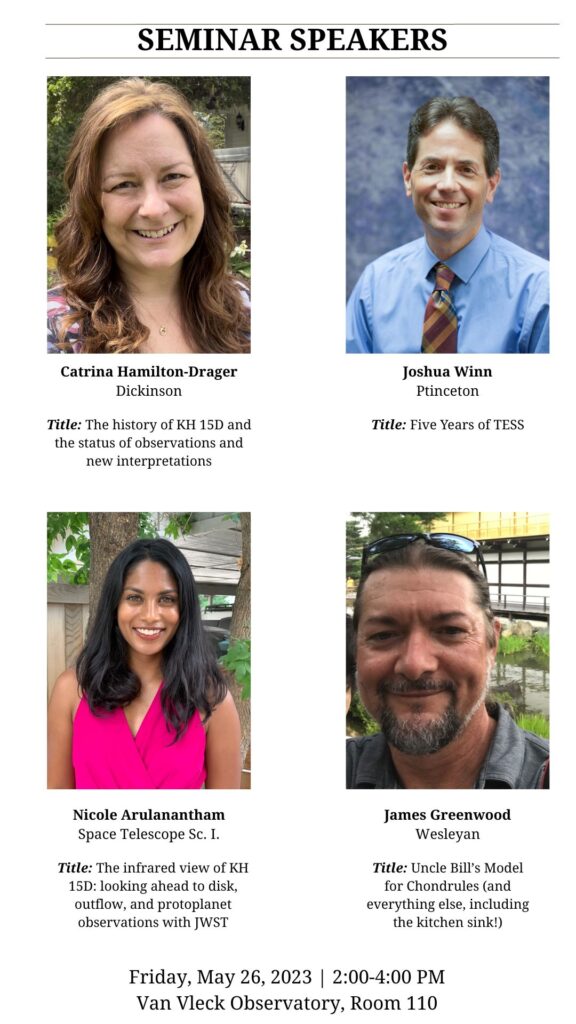
On Friday, May 26th, after 43 years at Wesleyan, and a two year delay due to the Coronavirus Pandemic, we were finally able to celebrate Bill Herbst’s retirement from Wesleyan! Thank you to all the friends, family, faculty, colleagues, current, and past students who were able to attend this special event.
About Prof. Bill Herbst
Bill grew up in southern New Jersey and was an undergraduate at Princeton University, where he majored in Astrophysics and graduated with High Honors. He received his Ph.D. in 1974 from the University of Toronto. He taught for two years at York University in Toronto and then accepted a position in Washington, D. C., as a Carnegie Fellow at the Department of Terrestrial Magnetism (DTM), a branch of the Carnegie Institution. In 1978, he joined the faculty at Wesleyan University where he rose to the rank of Professor and was the John Monroe Van Vleck Professor of Astronomy from 1991 until his retirement in 2021. His current title is John Monroe Van Vleck Professor of Astronomy, Emeritus.
He is an astronomer interested in star formation, planet formation, meteorites, chondrules, T Tauri stars and the formation of the Earth. He observes and interprets the light variations of T Tauri stars, objects that are similar in mass to the Sun but at an age (< 10 Myr) when their planetary systems were still forming. This research makes use of telescopes at Van Vleck Observatory (VVO) on the Wesleyan campus, other facilities around the world, and space telescopes. An object of particular interest whose unique behavior was discovered at VVO is known as KH 15D, and has been shown to be a “proto-Tatooine” object — that is, a binary star system orbited by a ring of material that may one day consolidate to form planets orbiting a double star like the fictional home world of Luke and Anakin Skywalker in Star Wars. More recently, has become interested in chondrules and chondritic meteorites, which are the most primitive samples of the solar nebula that reach the Earth’s surface on their own. In collaboration with James P. Greenwood of Wesleyan’s E&ES department, he has developed a theory of chondritic meteorite formation that addresses a long-standing problem in cosmochemisty, the origin of the chondrules. Their theory correctly predicted the density of the rocks on Ryugu, the first asteroid from which a substantial sample of rocks was returned, and also correctly predicted that these rocks would contain few, if any, chondrules.
Speakers
We welcomed to campus Catrina Hamilton-Drager, Joshua Winn, and Nicole Arulanantham to give seminars with Wesleyan’s Jim Greenwood. These speakers highlighted various topics that Bill had worked on during his time at Wesleyan. Bill ended the seminar series with remarks about his time at Wesleyan and his research during his time here and beyond.

It’s Not Goodbye…
Although Bill has officially retired from Wesleyan, he is still active in our department and we are happy he kept an office in VVO. He comes in from time to time to fill us in on his travels and what he is working on now.


